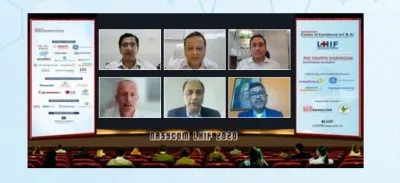8th edition of LHIF addresses telehealth and its widespread impact
Blog: NASSCOM Official Blog
The 8th edition of LHIF was conducted on 16th September, with more than 300 attendees from varied fields including healthcare, IT, management, governance and more. Read all about the highlights here
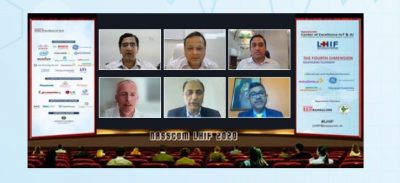
8th edition of Lifesciences & Healthcare Innovation Forum
The 8 edition of LHIF was virtually hosted on 16 Sept 2020. The event was attended by more than 300 people, and marked by government presence as well. TeleHealth, a more generic and appropriate name encompassing terminologies such as Telemedicine, Teleconsultations, Telediagnostics, Tele-radiology, Remote Monitoring etc. is the new normal and the Fourth Dimension to the traditional delivery channels. Being a new field, there are still many challenges in implementation and adoption of Telehealth ranging from platform limitations, integration of data, ethical and legal aspects.
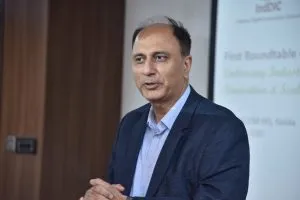
Sanjeev Malhotra, CEO, NASSCOM CoE, said that the focus on healthcare innovation has never been so important. CoE with its industry partners and support from MeitY and MoHFW, we are accelerating creation and Scaling of new technology solutions from startups and large companies.
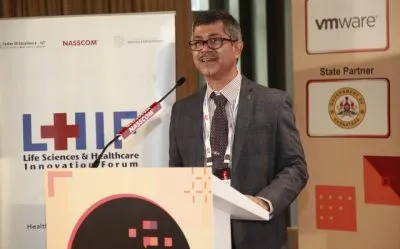
Raghuram Janapareddy, Director, Healthcare & Lifesciences, NASSCOM CoE-IoT & AI, began the session with a brief introduction on how LHIF as an event has grown rapidly in a short span of two years. He said that with the advent of new technologies such as IoT & AI, TeleHealth is going to emerge as a strong healthcare delivery channel. It is not only a new channel, but cuts across and enhances the way care is delivered through Primary, Secondary and Tertiary Healthcare Channels.
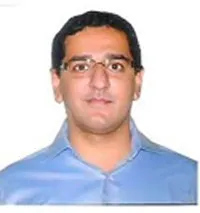
Mr. Saurabh Gaur, IAS, Joint Secretary, Ministry of Electronics & Information Technology, threw light on ‘India Transformation through AI’ and said, “All emerging technologies will be the engines of growth for the nation. If we want a $5 trillion economy by 2025, we see that these technologies will be great enablers as we forward. There is a huge opportunity for the Indian IT companies also as they now contribute 8 per cent to Indian GDP and they can move forward. We look at technology to make healthcare more accessible and affordable. There are opportunities to have creative outcome modelling ; when you have huge data you should be able to collate it and work around it to save lives. We would like to have industry partners for each field and collaborate with academia and government.
Listen to speech here-
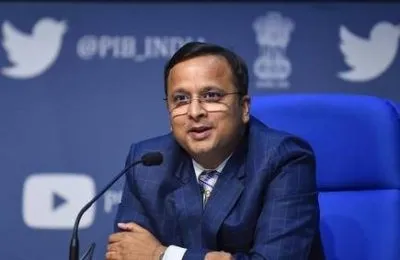
Mr. Lav Agarwal, IAS, Joint Secretary, Ministry of Health & Family Welfare, stated, “We as a country always had the strength in terms of IT. In the last 8-10 years, the Ministry of Health has been working on various applications and we also have disease surveillance programs. We were able to create a large amount of data when National Health Policy Blueprint came in 2019 where we were looking at an accessible and affordable health system. In 2019, India started thinking of an integrated approach, and as part of this came National Digital Health blueprint. It was to bring all the initiatives together and create an electronic health record. “Later, Mr. Agarwal released the research paper titled “Unravelling AI in Healthcare”published by NASSCOM Research Team incollaboration with EY.”
Listen to his speeches here-
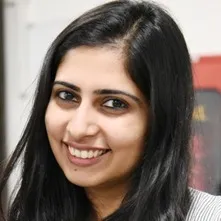
Dr Reema Aswani, AI Research Specialist, NASSCOM Research, said that AI transformation levers can play a pivotal role in India’s journey towards providing accessible efficient and affordable healthcare. All of us are familiar with the classic healthcare iron triangle of quality, cost, and accessibility where it is difficult to improvise on all of the factors simultaneously. For example, if we are wanting a quality healthcare it may not be accessible to remote locations and it may not be affordable. So, healthcare organizations are leveraging AI and other digital technologies to transform and break this healthcare iron triangle to simultaneously provide reduced cost, improved accessibility, and enhanced quality in the healthcare services.
Listen to her speech here-
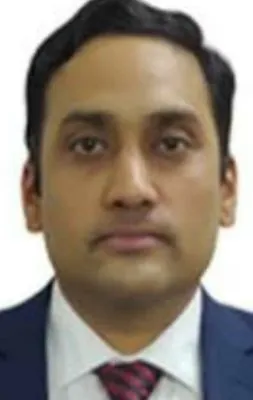
Dr. Praveen Gedam, IAS, Additional CEO, Ayushman Bharat, National Health Authority, Govt of India, added, “The advantage that India has for AI-based clinical support system is the sheer amount of data that we have as it will help in a better quality of additional support systems. E-sanjeevani has already crossed 3 lakh consultations and MHA is already making one more tele-medicine platform. We want more such platforms so that people can benefit from the competition. We already are medical tourism hub and we can now become tele-medicine hub for the world also. We can scale up very fast as is evident from the success of the Aarogya Setu app, which reached 130-140 million downloads in a couple of months.
Listen to his speech here-

Mr. Nick Passey, Vice President Digital & IT, International & Japan, AstraZeneca, UK, highlighted, “As a patient-centric organization, our ambition is to improve patient outcomes by facilitating their journey from awareness & diagnosis to treatment & recovery. We thus believe telehealth plays an important role in enabling patients’ access to HCPs, especially with specialists in areas of non-communicable diseases. Telehealth will also shape an approach that is adaptable and can be tailored to the needs and preferences of the end-user as we move forward. Our model of partnering with start-ups & providing them scale to achieve this ambition has successfully been proven in many countries.”
Listen to his speech here-
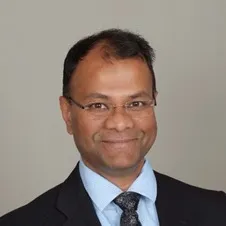
Mr Sudeepto Roy, Vice President, Qualcomm Technology Licensing, stated that Telehealth or as I would like to call it healing from a distance in a large and developing nation like India encounters at least three major challenges. The first one is that of inequitable access what I mean by that is whereas 75 percent of doctors are actually located in urban India. Seventy five percent of the population of India is actually in rural India and this leads to an abysmal ratio of one doctor to 25,000 rural citizens. The second area is that of access to specialists. So, even if there is a very good primary health care network, the ability to access an infectious disease specialist is scarce and it’s costly when that access is available. And, the last one is about massive data overload and the requirement of massive analysis at the cloud. A smart hospital by reckoning generates about five terabytes of data per day, India roughly has about 10,000 hospitals; imagine if in another 15 years all of these 10,000 hospitals and many more become smart. The amount of data that the hospitals alone will generate is equivalent to one third of India’s daily internet traffic today.
Listen to his speech here-

Fireside Debate: Ethical & Legal Contours around Telehealth
Dr Sunil Shroff, senior consultant, urology and transplantation, Madras Medical Mission Hospital, Chennai; president of Telemedicine Society of India, Tamil Nadu chapter; editorial director at www.medindia.net; president for Indian Society of Organ Transplantation. On the 14th of May we had a notification of the guidelines of telemedicine. It provides the medical professionals a good template to get started. So within this framework we need to work. It does not cover hardware or software, infrastructure, maintenance, data management, standards and interoperability. Most provisions in the telemedicine regulatory framework are left to discretion of RMP; the e-prescription form has data privacy issues, incomplete drug list, no format for consent, and breach of security or data leaks are not fully addressed. Talking of e-prescription format in the guidelines, the problem is where this form talks about relevant points from the history, examination lab, and suggested investigation, diagnosis provisional diagnosis, this becomes a little bit of challenge. This is where your confidentiality breaches. If you look at the list of drugs, there is a word etcetera in ‘follow-up medication for chronic illnesses for refill’. It gives us a lot of discretion but this is a tool which could also be misused. There is a need for independent bodies that will work towards looking at ethical, legal, and social implications (ELSI) of the digital revolution in healthcare.
Abhishek Malhotra, Managing Partner, TMT Law Practice One constant question that was put to us is: is it legal to practice telemedicine? We constantly say that this is in law and unless there is a prohibition to do a particular thing, it is by the absence of such prohibition it is considered to be legal. So please be rest assured if there are any challenges we will address it. We also realize that it’s extremely important to have a document which has a gazette notification backed with it so that tomorrow if someone files a frivolous complaint, you pick up that gazette notification and say look this document says that this is legal.It’s very important for the law or the regulations to have clarity because whereas it is subject to interpretation by court it is subject to interpretation by either side. The purpose of creating any body of regulation is that the entity or people to whom it applies should have a clear understanding of what exactly is required of them. It is the anticipated training programs that are sought to be launched or administered by the medical councils or the new entity that comes into play which will play a much greater role.
Listen to the debate here-
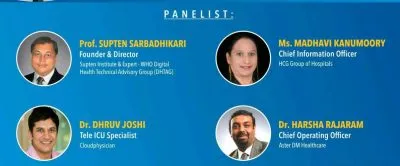
Panel Discussion: ‘Art and Science of Telehealth Implementation’ Ground Level Perspective.
Telehealth has been on the radar for some time and for all good reasons; it’s accelerated quite a bit in the last ew months. Telehealth is going to be transformational and we have seen just a glimpse of it during COVID and I think it’s just the start and there’s much more to come; it’s evolving and the opportunity is here. At a macro level the team has been quite consistent quite frankly what I have been thinking as well is the accessibility, affordability and quality of care continue to be our priorities. In the overall ecosystem you look at accessibility, for example with combining technology and the various business models whether it’s B2B to B2C, combining this together telehealth is really promising in terms of providing that accessibility and affordability. It’s been quite talked about with regards to whether it’s for the consumer or for the provider; its significant cost savings let you think about it, people don’t have to travel as much as they did in the past, it can reach the tertiary organizations tier one tier two and from a provider perspective huge cost savings in terms of infrastructure that have to be put in place. If done right this is going to be a big parameter that will hit especially because there’s going to be access to experts. We have expertise in India and we can cover the world so not just within India but even outside. It’s going to be a two-way street so definitely if this is planned well quality can be a big parameter. When you put things together is when you can achieve the results that we would like even within the technology provider when you talk about various systems that we have in place.
Listen to the entire panel discussion here-
Healthcare Startup Virtual Showcase
Aikenist: Aikenist provides AI-based solutions for faster MRI scanning, better diagnosis capability and quick turnaround to reach the benefits of medical imaging to a larger population for regular checkup of critical illness like Cancer, Alzheimer’s and common MSK problems. QuickScan accelerates MRI scanning by 4x which means 20 mins scan can take 5 mins now. The solution enhances patient convenience and improves return on investment for hospitals and diagnostic centers. The solution is based on very innovative technology using AI-based algorithms. QuickDiag COVID-19 which detects COVID-19 infection of lungs using AI analysis of X-Ray/CT scan and quantifies the extent of the damage. www.aikenist.com
Cardiac Design Labs: Cardiac Design Labs has built a Telemetric Patient Monitoring System which is centralized vitals monitoring system with all vitals such as ECG, respiration, SpO2, body temperature and blood pressure being measured & monitored continuously. This gives monitoring capabilities from a central location where multiple patients can be simultaneously monitored. This central location could be a nursing desk monitoring in a ward or a remote monitoring centre/hospital. beatWISEholter device has CDSCO clearance. A significant component of the system is the algorithms. The results of the algorithm are benchmarked on the reference databases against some of the global players. www.cardiacdesignlabs.com
Helyxon: Helyxon is a technology healthcare enterprise, in collaboration with IIT Madras. Helyxon’s OXY range of products, is a CE certified unique real time 4-in-1 monitoring device that can monitor temperature, Oxygen Saturation, Pulse Rate and Respiratory Rate, designed for continuous remote monitoring from anywhere, needless of any physical presence for monitoring. This is useful for anyone who is home and hospital quarantined / or isolated and is suitable for all age groups. www.helyxon.com
Salcit: Salcit Technologies is focusing on providing digital health solutions for respiratory diseases. The CDSCO certified product identifies (a) if there is an underlying respiratory condition (b) whether the condition is obstructive/ restrictive and (c) the level of severity. It also provides additional information on dry and wet cough count. All of this is accomplished in seconds on the basis of a patient coughing into a smartphone. Swaasa brings the functionality of Spirometry freed from the constraints of location, time, special equipment, and trained personnel to all the times and places it never could by putting it into personal mobile devices of patients. https://salcit.in
Ayu Devices: Ayu Devices have developed India’s 1st Bluetooth enabled Digital Stethoscope. The healthcare provider can auscultate a patient by maintaining a safe distance from the patient. The device facilitates amplification of heart & lung sounds up to 16 times, Heart and lung sound recording and playback, noise filtration and most importantly sharing of auscultated sounds which can be sent from remote periphery locations to the best physicians in just a touch of a button thus helping in Telemedicine and Telehealth sectors. The device is specifically helping to fight the COVID-19 crisis as well. Auscultations can be taken even while wearing the PPE protective suit thereby keeping the Healthcare Workforce safe. www.ayudevices.store
Docturnal: Docturnal provides Point of Care & Non-Invasive Screening for Pulmonary Tuberculosis (TimBre), Pneumonia & NCOVID19 (CoVawe) offering Real-Time results leveraging Machine Learning over Aural and Clinical inputs. Active Case Finding is a challenge in a country like India, the entire world struggles with it, but the reality of the infrastructure investments is daunting. “coVawe” is a screening tool that screens for Covid-19 & Pneumonia with the sound of the cough & available in two variants: 1) DIY, Do it Yourself 2) Clinical Setting “TimBre” is a screening tool that screens for Pulmonary Tuberculosis & COPD with the sound of cough in a Clinical Setting. www.docturnal.com
Dozee: Dozee is India’s first contactless CE RoHS certified health monitor that is helping monitor 2000+ Covid-19 patients in hospitals and monitoring thousands of at-risk individuals at home. It is a thin sensor sheet that goes below the mattress and tracks heartbeat, respiration, oxygen saturation and more and sends this information remotely to healthcare service providers on dashboard/app. Dozee is helping in early detection of deterioration, reducing nurses workload and their exposure to infection. www.dozee.io
BeatO: BeatO’s compact smartphone-based glucometer effortlessly takes readings, sync with the BeatO app, and maintains a log of all the previous readings to understand the pattern of blood sugar levels. BeatO Smart is CE certified. www.beatoapp.com
IRACS: IRACS is a research laboratory set at IIT Gandhinagar handled by Prof. Uttama Lahiri. The applications are, (1) Training Platform for social skills for adolescents with Autism. (2) Rehabilitation platforms for stroke patients with an upper and lower limb movement disorder. https://research.iitgn.ac.in/iracs/index.php
The post 8th edition of LHIF addresses telehealth and its widespread impact appeared first on NASSCOM Community |The Official Community of Indian IT Industry.
